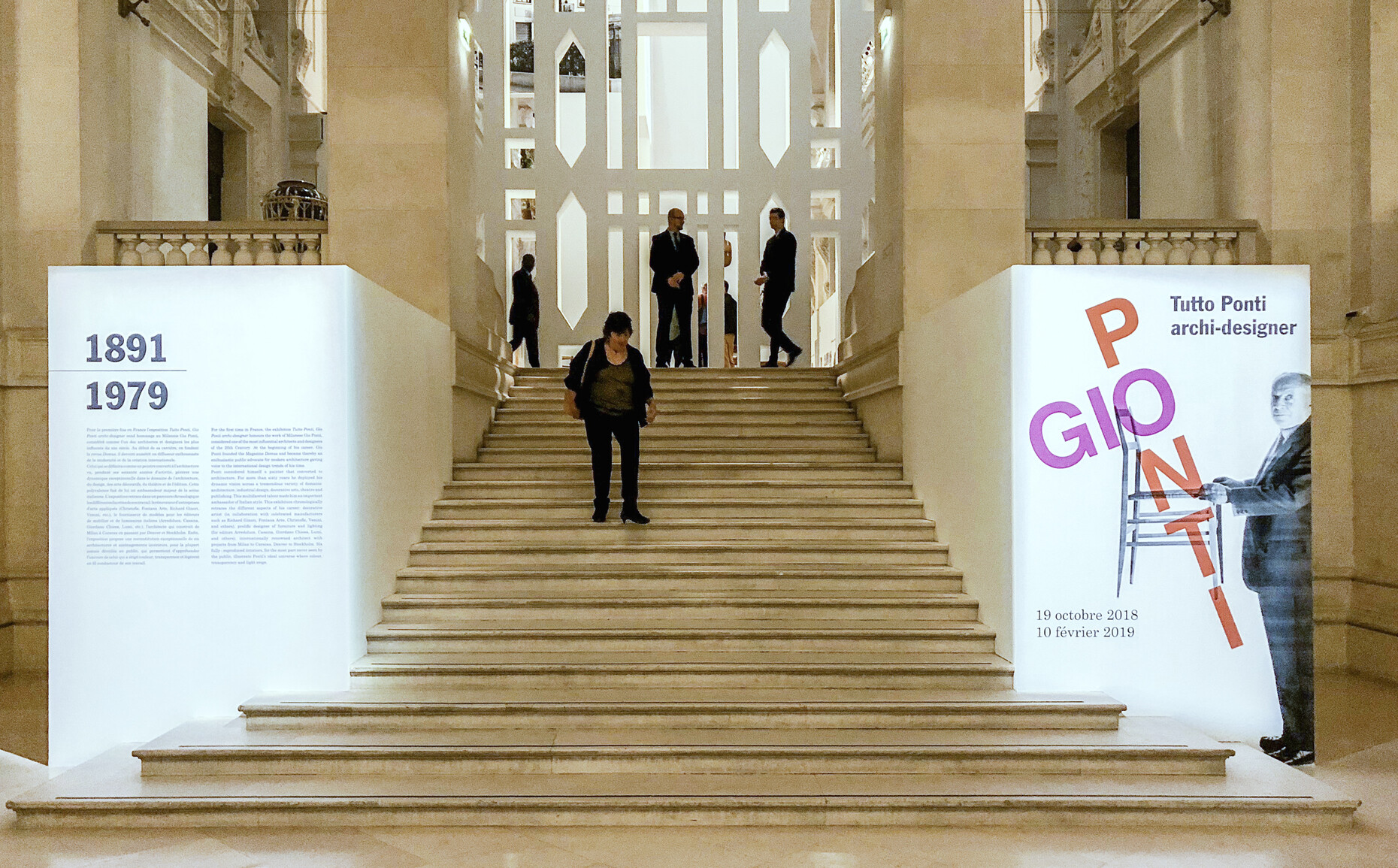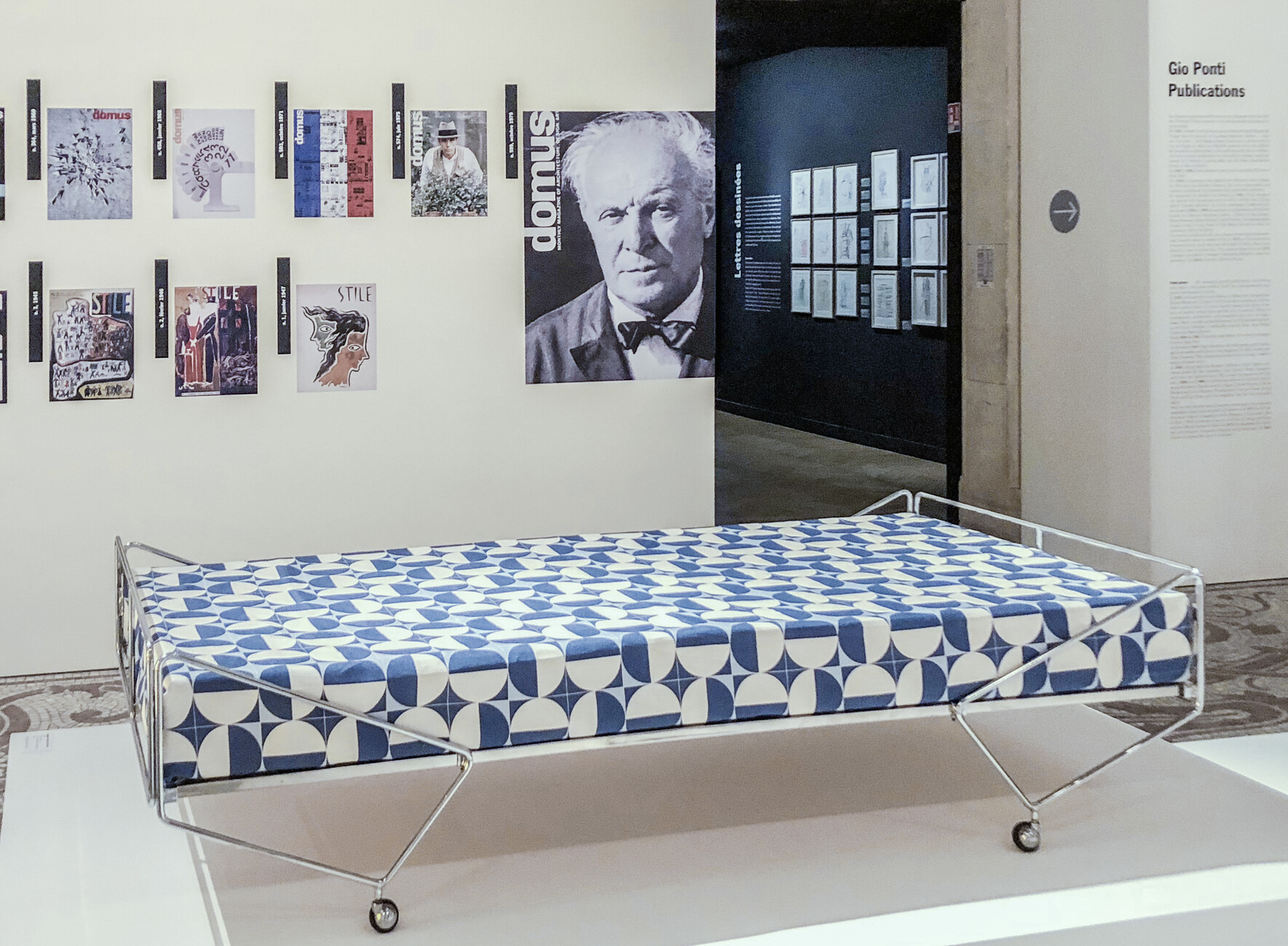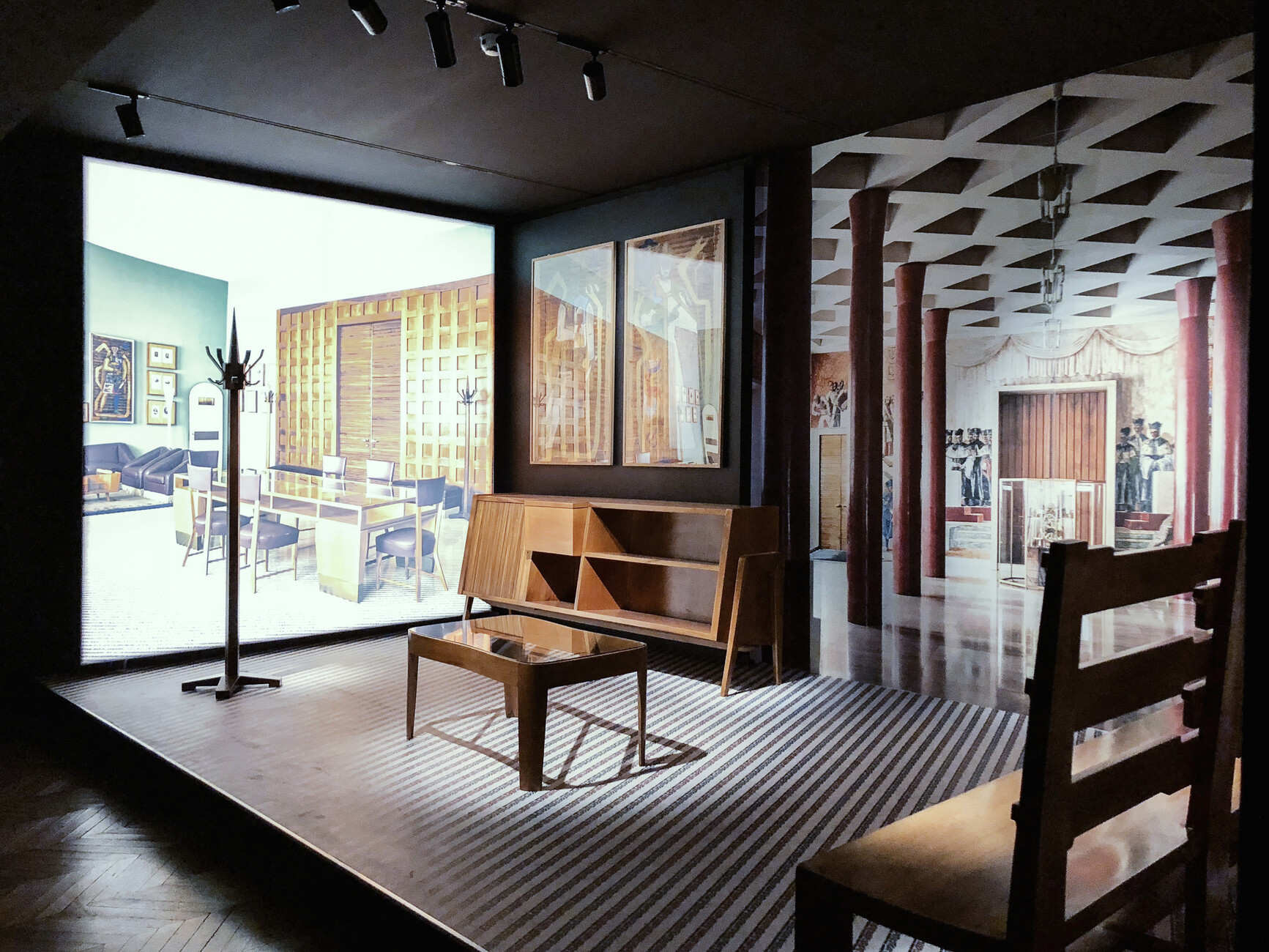The full Ponti
These days, when we talk about works by the great architect and designer Gio Ponti we tend to be referring to his designs from the 1950s and 1960s. His furniture designs in particular have become popular once again thanks to the revival in mid-century items. Hence, for example, the Italian luxury furnishings manufacturer Molteni & C has been reissuing one of his designs from this period each year – and has garnered a lot of praise for it. At the same time though, there has been some neglect of the fact that Ponti’s career actually began in the early 1920s. The Musée des Arts Décoratifs in Paris is now attempting to broaden this otherwise narrow perspective – with a major exhibition.
Anyone who has thus far viewed believed Ponti could be exclusively pigeonholed as a Modernist will be surprised, as it was only in the mid-1930s that influences of razionalismo and “New Building” become visible in his architectural work. It is even later that he begins to move away from bourgeois seriousness and substantiality in his art. The cultural catastrophe that was World War I, in which he participated as an officer, did not prompt him to radicalize his artistic position, unlike the artists of the Bauhaus and De Stijl, for example. Nevertheless, this bourgeois-born graduate of Milan’s renowned Polytechnic quickly made a mark with his tasteful and decorative art-and-crafts work. His ceramic designs, which were in keeping with the classic tradition, won him a first prize at the International Exhibition of Modern Decorative and Industrial Arts in Paris in 1925. He designed silver for Christofle, glass for Venini, and furniture from 1927 onwards.His designs drew on European art history, varying the model imaginatively, and thus creating something that was familiar and yet never outdated. Ponti proved to be a great master in dealing with a huge variety of materials, which he knew how to apply to best effect right from the beginning of his career. It remained that way when he shifted formally speaking towards a thoroughly sedate vein of Art Deco during the 1930s.
As an architect, his style was one of somewhat affected historicism in the 1920s,and it was only when he opened himself up to the influences of Modernism that his work became more convincing. He created a masterpiece in the guise of the Faculty of Mathematics for the newly built Città Universitaria in Rome, one of Mussolini’s prestige projects under the leadership of his court architect Marcello Piacentini. While Piacentini’s buildings spoke an architectural language that was functional and influenced by German “New Building”, Ponti created a structure that combined radically Modernist elements with his very particular sense for decoration. Even the groundplan appears to be an abstract decorative form.
It was only after World War II that Ponti the furniture designer really sought (and found) his connection to progressive industrial design which – stemming from the avant-garde movements of the interwar years – was now swiftly gaining ground across a broad front.His genius lies, not least, in the fact that he was able to take everything that defined his earlier works – an infallible sense for proportions and for decoration – into his new period of creativity. His designs radiated self-confidence because they knew how to link up firmly to Italian and European cultural tradition. Hence they developed an aura of luxuriousness that never descended into gaudiness. Combined with Ponti’s propensity for Modernism, all these qualities gained a lightness and delicacy that his designs had often lacked previously.
With the Pirelli Tower in Milan, he designed one of Modernism’s major high-rise buildings in the 1950s,but some of Ponti’s most beautiful architectural works are unquestionably his later church buildings, which have come to be much admired again in recent years. These sacred buildings are not concrete sculptures like that at Ronchamp, but rather liturgical spaces. Ponti’s sense of tradition and his decorative skill meant he was uniquely predestined for a task of this kind.
The curators of the Paris exhibition do justice to Gio Ponti’s oeuvre from various perspectives: They resist the temptation to break down his diverse body of work into themes.Instead, somewhat conservatively, they have chosen a chronological approach whereby they have transformed the museum’s large elongated exhibition hall into a kind of immersive timeline. The small-format handicrafts – ceramics, glass, silver – are assembled in three side cabinets, where they are likewise presented chronologically. These cabinets, the walls of which are painted black, emphasize the splendor and the luxury character of the objects exhibited there. One of the curators’ particularly successful ideas is the six spatial installations: Each of these condenses one of Ponti’s interior design projects into a collage of furniture and photographs, which precisely capture the overall effect and atmosphere of the designs quite uncannily. Here again the exhibition designers have attempted to use their selection to simultaneously provide an overview of Ponti’s life’s work with its many different facets. The lime extends from the interior of the villa “L’Ange Volant” in Garches nr. Paris dating from 1928 to the furnishings for the Villa Planchart in Caracas, developed between 1953 and 1957, one of Ponti’s final commissions as an architect. It is perhaps this form of presentation showing the complete ensemble of furniture that most impressively highlights what lay behind Ponti’s mastery, namelyhis incomparable feel for style and his ability to create high-brow surroundings that transcended all fashions and short-lived trends to endure throughout his entire period of creativity.
Tutto Ponti
Gio Ponti archi-designer
Musée des Arts Décoratifs
107 rue de Rivoli
75001 Paris
until February 10, 2019
Opening hours:
Tue, Wed., Fri., Sat., Sun.: 11-18 h
Thu: 11-21 h
Mon. closed











